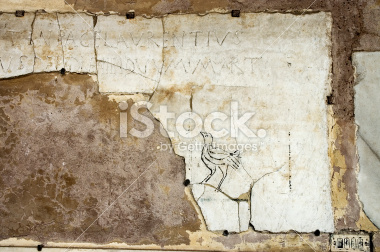
The Berlin Wall is a staple of history, not only that but, for many reasons it is also a study in art and crime. The Berlin Wall, as its name would suggest was a wall that separated the eastern Soviet controlled Berlin from the western American controlled Berlin during the cold war. Over the years, as the wall stood tall, the western side was thoroughly covered in colorful graffiti. It was open season on the western side of the wall and the art wasn’t policed much at all. The eastern side, however remained untouched as no one could get close enough, past its daunting armed guards, to touch it.
Although, the graffiti on the western wall would be an interesting study in art and crime on its own I’m going to focus on something else. In the early hours of November 3rd 1986 five men made a unique contribution to the art on the western side of the Berlin Wall. The masked men drew a thick white line along five kilometers of the wall. The men avoided the guards along the wall to commit the crime that would cover up the graffiti that is usually considered a crime itself. The men didn’t paint the line arbitrarily, but like the best of art and crime they had a purpose and a story to tell.
All five of the men were born and grew up on the eastern side in Weimer under the watchful eye of the Berlin wall. As they grew, however their rebellious ways soon led to their familiarity with the authorities. One of the men, Frank Willmann spent his time reading Nietzsche, another Frank Schuster dressed the part of the rebel, Wolfram Hasch had rebellious long hair, Jurgen Onisseit played in a punk band, and his younger brother Thomas already had a career in graffiti. After many run-ins with the police and various small rebellions the five men were allowed to resettle in the west. That is how they came to west Berlin and its colorful stretch of graffiti.
Each of the men had their own reason for painting the line. For one it was a protest that something that caused so much pain and was such a huge part of history was turned into little more than a huge canvas. For another it was a reminder of their escape from the other side of the wall. To another it was a reminder to the west of the atrocities and struggles that happened just a few feet away on the other side of the wall.
Regardless of their meaning or their purpose the establishment only saw the crime. On the morning of November 4th 1986, border guards slipped through secret doors in the wall and ambushed the artists. Four out of the five artists escaped, Wolfram Hasch was captured and taken to a prison on the eastern side for three months.
Graffiti is commonly considered a crime, but in this case it was a simple bucket of white paint that caused the disruption. This act of defiance calls into question that which we call art and that which we call crime. The definition of art is elusive and generally difficult to articulate and that’s why I won’t attempt to define it now. I will however, mention that maybe in our pursuit of art we lose track of its purpose and its story. One of the things that makes art great is its history and its cost. To the five men who painted the line the cost was great. As for crime, I think it’s clear and always has been clear that the definition of crime is determined by the powerful. Maybe that’s why art and crime often find themselves linked, art is so often used as a form of expression and a form of protest and any protest lends itself to criminality. Art and crime seem inexorably linked. In this case, the colorful graffiti on the wall wasn’t a crime but a simple white line was.
These five men redefined art once again and in their rebellion and purpose they retold their story and the story of thousands of others who suffered because of a wall and a war. Art and crime have the power to tell stories when words fail. They make clear what is otherwise distorted and controlled and for that reason they are dangerous. They cause us to remember and to think, to think just like these five men did that maybe things should change and maybe we should remember how things were so they aren’t ever like that again.
More information at: http://www.theguardian.com/artanddesign/2014/nov/03/east-german-punks-berlin-wall-radical-art-stunt






